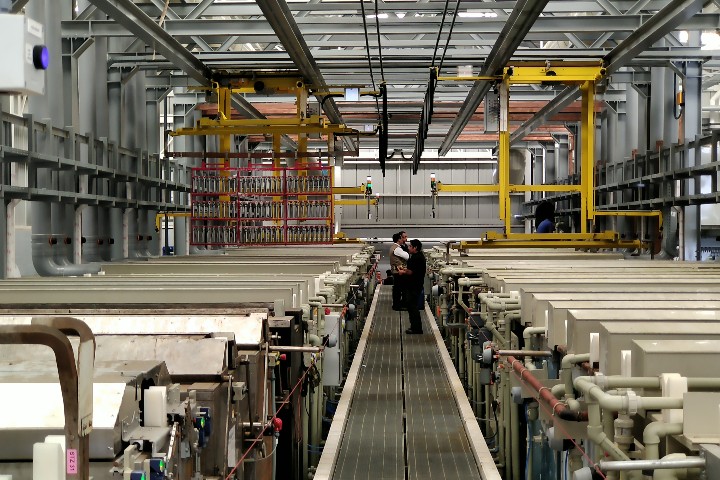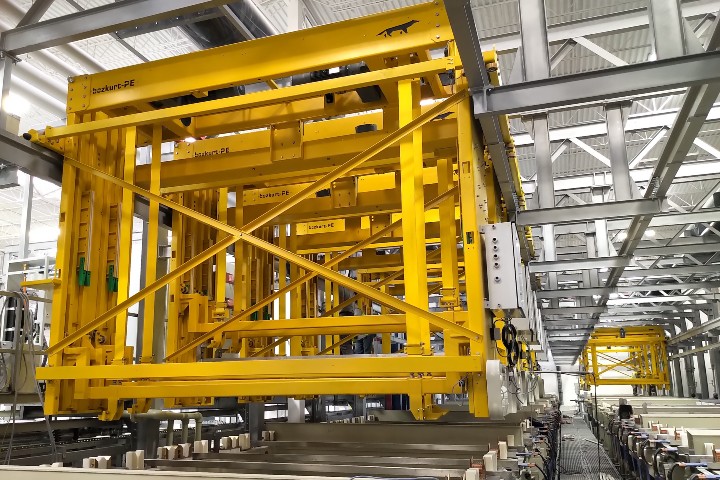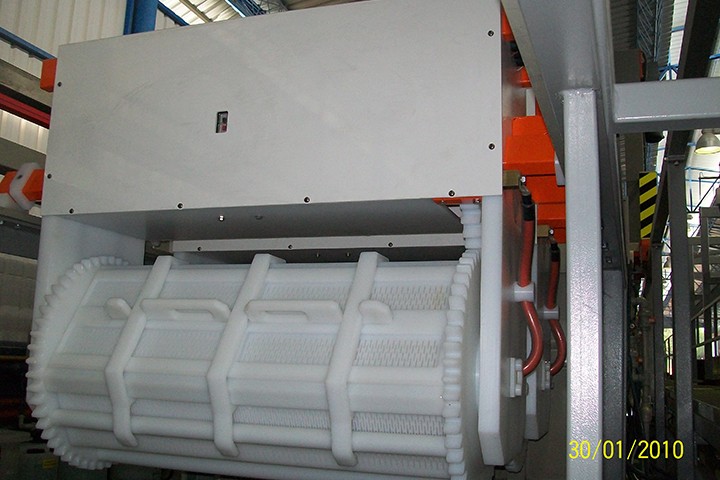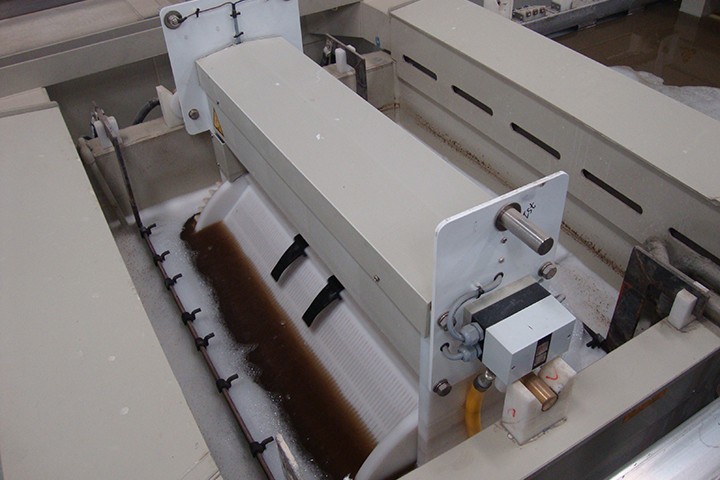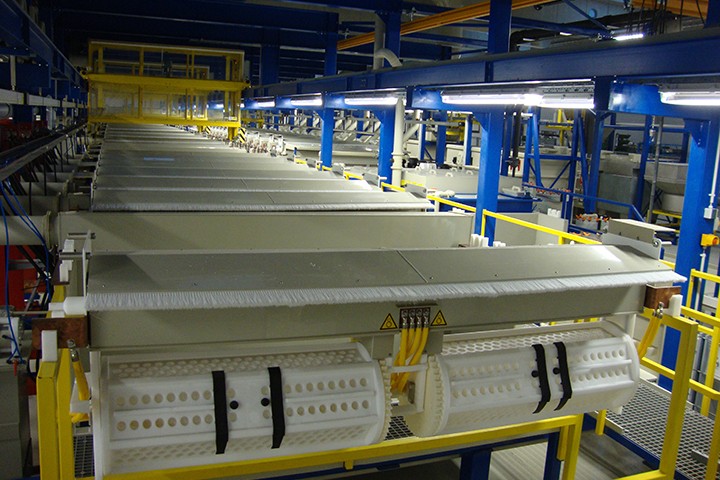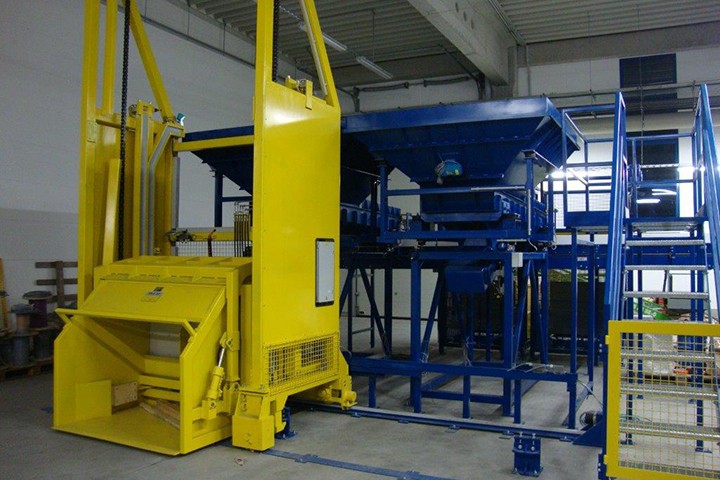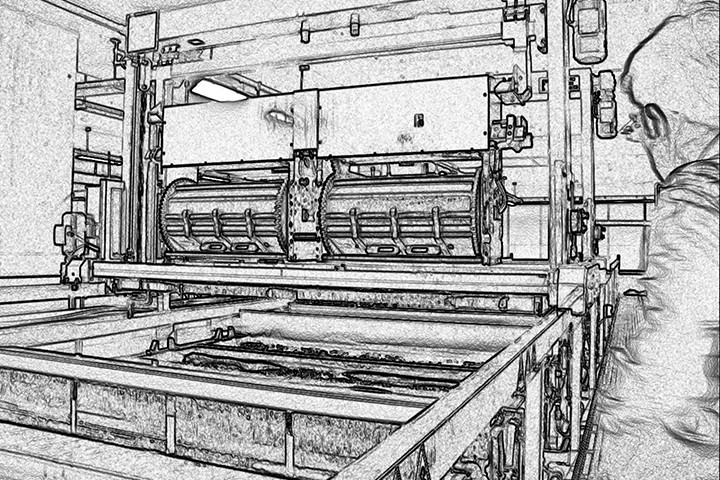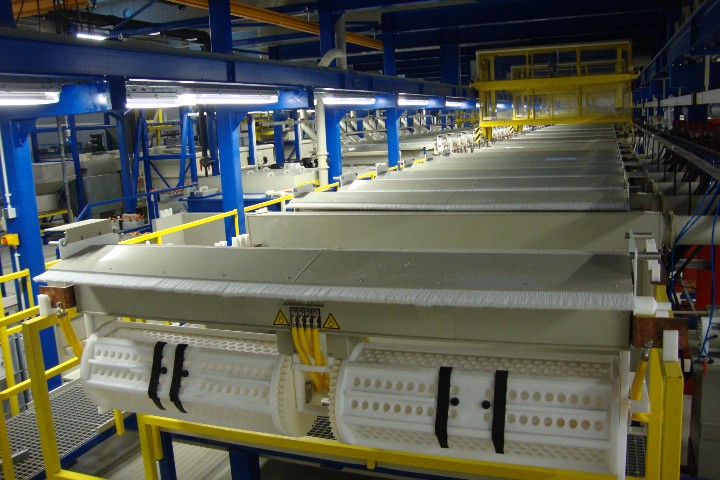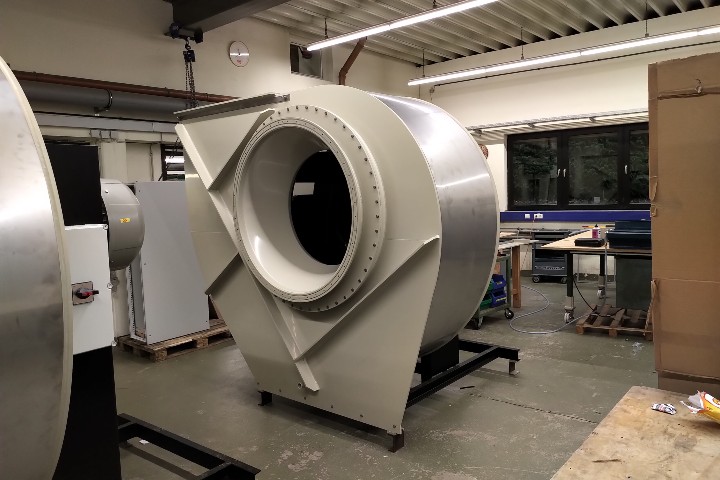-
Bulk Plating Systems
Bulk Plating: The smaller products which are not possible to hang on the jigs are electroplated in plating barrels and then post-treatment is done either again within barrels or centrifuge baskets.
The capacity is set in mass per charge, that is the possible maximum amount of product that can be loaded within the plating barrel. The barrels sizes vary in length and diameter, according to the capacity requirement and system cycle time. Special types of barrels could be integrated into the line for specific purposes. The products processed typically are screws, bolts, nuts, studs, smaller stamped sheet metal products, etc.
In general post treatment operations (passivation - sealing top - cot-drying) are done within cylindrical baskets, which brings process efficiency and chemistry economy.
Depending on the requirements, a heat treatment system can be integrated to the process flow in order to reduce the hydrogen embrittlement phenomenon, which results with cracks on the deposition reducing the corrosion resistance due to the hydrogen gas formed during electrolysis. Thanks to the heat treatment after electroplating, the deposition is relieved and reduces the risk of deposition damage.
As a complete system supplier, Bozkurt-PE provides handling systems as well like automatic material loading unloading systems, that could be integrated to the existing ERP systems. -
Zn & Zn Alloy Platings
The most common electroplating application, the purpose is to increase metal products lifespan through the application of Zn and Zn alloys electro-deposition on the product surface. The process is either acidic or alkaline depending on the conditions and requirements specific to the product.
A generic process sequence is composed of the following:
pre-treatment (surface cleaning) - electro-plating - post-treatment (passivation and a sealing top-coat depending on the application)These kind of plating is applied either on jigs (rack plating) or bulk plating in barrels and post treatment in centrifuge dip-spin systems. Bozkurt-PE delivers the best efficient design together with optimum equipment selection that perfectly fits to the customer's requirement. -
Rack Plating Systems
Rack Plating Systems: Products are hanged/fixed on custom designed conductive jigs which are fixed on the flybar that is carried by the automatic transporters. Complete system is designed over the "Plating Window" concept. The capacity is set as quantity per charge.
Plating Window is the virtual rectangular prism that is travelling in the plating line. It sets the boundaries for the customer to hang the parts on the jigs and defines the capacity per charge. -
Electrophoretic Deposition (EPD)
Electrophoretic deposition (EPD), is a term for a broad range of industrial processes which includes electrocoating, cathodic electrodeposition, anodic electrodeposition, and electrophoretic coating, or electrophoretic painting. A characteristic feature of this process is that colloidal particles suspended in a liquid medium migrate under the influence of an electric field (electrophoresis) and are deposited onto an electrode. All colloidal particles that can be used to form stable suspensions and that can carry a charge can be used in electrophoretic deposition. This includes materials such as polymers, pigments, dyes, ceramics and metals.
The process is useful for applying materials to any electrically conductive surface. The materials which are being deposited are the major determining factor in the actual processing conditions and equipment which may be used.
- PHONE +90 224 443 33 16
- MAIL info@bozkurt-pe.com
- English Español русский
